Chillers, why you should have one, repairs and good maintenance!
South East Queensland Marine Aquarium and Ocean activities Forum :: SEQMAOAF :: Advice on all marine aquarium issues
Page 1 of 1
 Chillers, why you should have one, repairs and good maintenance!
Chillers, why you should have one, repairs and good maintenance!
Why and what.
First and foremost, purchase an over rated chiller by at east 50 percent more then your total water volume!! If the water volume you are trying to cool is 400 litres, get a chiller that will easily do 600 to 800litres, this is a must!!!
The following link will indicate the prices and types of chillers commonly used.
http://thereefshop.com.au/index.php?main_page=index&cPath=43
Hailea is the one i use and is perfect and keeps up with Queensland heat nicely and the fan in this unit is of a sealed bearing, that being said teco is supposed to be slightly better, how I do not know, as i have not used one.
To use a chiller correctly you should not have it in the same room as the aquarium and most certainly not under the aquarium.
You can pipe then chiller pipes through walls, the holes are easy to fix with spak filler and have a matched small can of the walls paint colour on hand somewhere to repair the hole quick and easy so it looks like it never happened.
This way it really doesn't matter if it is not a very quite one as well.
If the chiller is in the same room as the aquarium, it will heat the air in that room, subsequently heating your aquarium water to a degree so the chiller is working against it self.
If it is near the aquarium the humidity will affect the supposedly sealed electrics.
In saying all that, you can still have it close to the aquarium with certain measures in place.
1.It should be vented to the next room or to out side of the home.
2.You need to strip the chiller down after each season and apply silicon spray to all metal and electric parts, including the screws that hold it all together!
3.The bush bearing area of the electric motor should have silicon grease and spray applied each end of the shaft after each season or twice during the season.
If your home allows good aquarium water temperatures, plus add in the power heads heat out put, lighting heat (If any) for water temperature to be no higher then 24c to 26c from January around again to the next January each year, then you do not need a chiller!
Of course that’s highly unlikely, but hey we some times we have to find out the hard way and even if you did have room for a chiller under the aquarium, than you have most likely a far to small of a sump, to give good water quality control.
If your water isn’t kept at a stable and relatively cool temp like a minimum 22c to a max of 27c and rises above this, then your water becomes unstable resulting in KH and PH instability.
All the aquarium inhabitants will suffer harmful stress and this will begin to kill most life forms and disrupt the biological functions that are keeping your tank free of adverse ammonia and nitrite in your aquarium.
With high water temperatures, this will happen, slowly or quickly, it will happen!!
High temps may cause corals to expel algae as it becomes toxic to its original coral polyp, algae on your glass-anywhere will go to spore at high temps including cyano and cyano bacteria spores are toxic.
This may aggravate or kill filter feeders, also the fishes gills and possibly their gut and organs as they drink constantly to ward of osmotic functions.
Protein will become even more detrimental, available oxygen will become more scarce damaging the fish neurologically, the bond between the salts components sodium-chloride will be disrupted and the more active chloride in the water at high temps will affect your PH and the fishes gill structure.
Some times hobbyists are lucky and do not realise their mistakes for the standard 6 months to 2 years, as it has always been with the hobby, some sadly much quicker!
There are so many reason why you have to keep salt water temps stable, to many to state them all!!!!!!!
Chiller basic maintenance.
The chillers on the market especially for the use on reef aquariums need to be maintained.
Regular cleaning of dust and similar from the filter area of the chiller is extremely important to avoid its over heating, also this item for the marine aquarium should not be kept close to the aquarium!
Cleaning your chiller dust filter.
This is what will happen if you do not check and clean this filter each month during the times when the chiller is in use.
Dirty filter with heat damage.
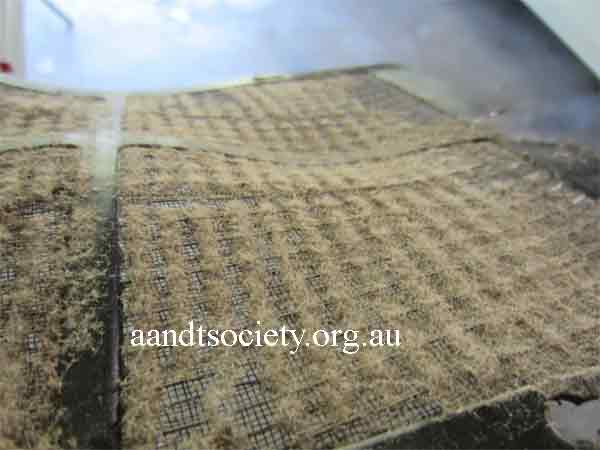
The chillers electronics are not properly protected from humidity and the exchange of air meaning the hot air from the chiller has to be removed from the room the chiller is in or it will not function at its best.
When the warmer months have past its time to put away the chiller to protect it from humidity and other possible affects to it.
One of our forum users redsoxbill has added a bit more that sounds usefull,he found that using vinegar and water solution works best to disinfect the chiller internals.
This is harmless to fish, and will dissolve any algae including coralline algae that may be in the chiller.
Also that while it is better to keep the chiller away from the tank if possible, that if the distance or elevation difference is more than 6 feet it may take a larger supply pump to feed the water flow to the chiller.
The first picture here shows how to flush out all salt water from the chillers internal piping.
You can use a bucket of water with a combination of warm water and fabric softener and use the power head water pump to push the buckets contents through the chillers pipes to give the metals contained with in no chance of corrosion and no life within the tubes to become toxic while in storage, plus the fabric softener is non toxic when restating on system.
If you are concerned with possible build up in the chiller piping, you can run a mix of vinegar and warm water through it.
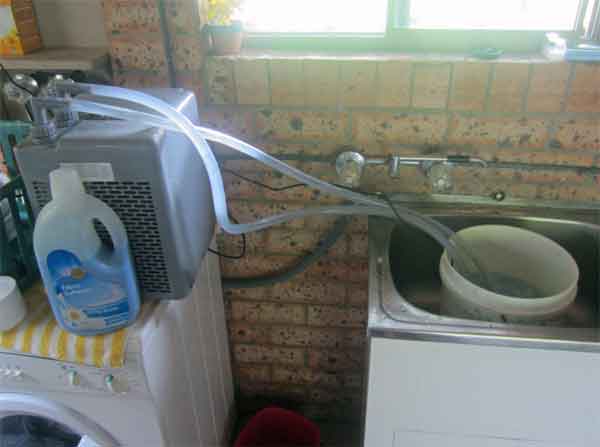
Once you have flushed out its pipes you need to make sure every part of the chiller is dry and free of any rubbish.
Spray all of the chiller with some nulon spray and wipe clean,do not get any nulon in the pipes, place in a plastic bag and put it away until the next warm season is arriving and it can be just plugged in and switched on!

Chiller controller replacement.
This shows you how to repair the electrics on your chiller,which is usually why chillers fail.
It is advised that you should get a proffessional; to do this.
The new controller that is installed into this chiller is available from heat craft and here in Bris there is one at Thynne road Morningside. The number there at this stage is 39029400. The model controller best suited for this is the XR 20.
Heat craft-
http://www.whitepages.com.au/business-listing/heatcraft-australia-pty-ltd-1020366/morningside-qld
Remove cover via undoing screws from the chiller.
This is the old controller, once taken out.
This shows the obvious moisture damage to the controller.

This is the controllers face that will need to have a hole cut out of it for the new controller to fit into, its not needed to do it this way, it just looks better.

Check the thermostats condition, as you will be using the original one in the chiller.
As you can see there is quite a lot of rust as well from being to close to the aquarium or sump.
Now this doesn’t have to be done, but in this case, the power was attached directly to the chiller to check to make sure it was all working fine.

Once it has been running for a while, check the temp to see if it is dropping nicely. As I said this may not be needed with your chiller,it is just to make sure there is nothing else wrong.
This shows the fan area and with these cheap fans they have a bush bearing, which each year should be lubricated. You can easily see where this needs to be applied at both bearings.

This shows the hole cut inn the old controllers face and the new controller fitting in nicely.
A nice neat cut and fit should be aimed for. I used a soldering iron and especially a diamond bladed angel grinder.

Looks good.
These three photos show the wiring configuration. Though its not need here as the controller comes with wiring instructions.

Thermostat returned and in place.
Clean off rust and apply silicon spray, as you should have done with any metal or electrical appliance used with marine aquariums, anywhere near them!


Put as little as possible of any spray onto the heat exchanger grill for the chiller,or this will lesson the chilers function of chiling the water.
Put the chiller back together and it should work nicely for a very long time, with regular maintenance!
First and foremost, purchase an over rated chiller by at east 50 percent more then your total water volume!! If the water volume you are trying to cool is 400 litres, get a chiller that will easily do 600 to 800litres, this is a must!!!
The following link will indicate the prices and types of chillers commonly used.
http://thereefshop.com.au/index.php?main_page=index&cPath=43
Hailea is the one i use and is perfect and keeps up with Queensland heat nicely and the fan in this unit is of a sealed bearing, that being said teco is supposed to be slightly better, how I do not know, as i have not used one.
To use a chiller correctly you should not have it in the same room as the aquarium and most certainly not under the aquarium.
You can pipe then chiller pipes through walls, the holes are easy to fix with spak filler and have a matched small can of the walls paint colour on hand somewhere to repair the hole quick and easy so it looks like it never happened.
This way it really doesn't matter if it is not a very quite one as well.
If the chiller is in the same room as the aquarium, it will heat the air in that room, subsequently heating your aquarium water to a degree so the chiller is working against it self.
If it is near the aquarium the humidity will affect the supposedly sealed electrics.
In saying all that, you can still have it close to the aquarium with certain measures in place.
1.It should be vented to the next room or to out side of the home.
2.You need to strip the chiller down after each season and apply silicon spray to all metal and electric parts, including the screws that hold it all together!
3.The bush bearing area of the electric motor should have silicon grease and spray applied each end of the shaft after each season or twice during the season.
If your home allows good aquarium water temperatures, plus add in the power heads heat out put, lighting heat (If any) for water temperature to be no higher then 24c to 26c from January around again to the next January each year, then you do not need a chiller!
Of course that’s highly unlikely, but hey we some times we have to find out the hard way and even if you did have room for a chiller under the aquarium, than you have most likely a far to small of a sump, to give good water quality control.
If your water isn’t kept at a stable and relatively cool temp like a minimum 22c to a max of 27c and rises above this, then your water becomes unstable resulting in KH and PH instability.
All the aquarium inhabitants will suffer harmful stress and this will begin to kill most life forms and disrupt the biological functions that are keeping your tank free of adverse ammonia and nitrite in your aquarium.
With high water temperatures, this will happen, slowly or quickly, it will happen!!
High temps may cause corals to expel algae as it becomes toxic to its original coral polyp, algae on your glass-anywhere will go to spore at high temps including cyano and cyano bacteria spores are toxic.
This may aggravate or kill filter feeders, also the fishes gills and possibly their gut and organs as they drink constantly to ward of osmotic functions.
Protein will become even more detrimental, available oxygen will become more scarce damaging the fish neurologically, the bond between the salts components sodium-chloride will be disrupted and the more active chloride in the water at high temps will affect your PH and the fishes gill structure.
Some times hobbyists are lucky and do not realise their mistakes for the standard 6 months to 2 years, as it has always been with the hobby, some sadly much quicker!
There are so many reason why you have to keep salt water temps stable, to many to state them all!!!!!!!
Chiller basic maintenance.
The chillers on the market especially for the use on reef aquariums need to be maintained.
Regular cleaning of dust and similar from the filter area of the chiller is extremely important to avoid its over heating, also this item for the marine aquarium should not be kept close to the aquarium!
Cleaning your chiller dust filter.
This is what will happen if you do not check and clean this filter each month during the times when the chiller is in use.
Dirty filter with heat damage.

The chillers electronics are not properly protected from humidity and the exchange of air meaning the hot air from the chiller has to be removed from the room the chiller is in or it will not function at its best.
When the warmer months have past its time to put away the chiller to protect it from humidity and other possible affects to it.
One of our forum users redsoxbill has added a bit more that sounds usefull,he found that using vinegar and water solution works best to disinfect the chiller internals.
This is harmless to fish, and will dissolve any algae including coralline algae that may be in the chiller.
Also that while it is better to keep the chiller away from the tank if possible, that if the distance or elevation difference is more than 6 feet it may take a larger supply pump to feed the water flow to the chiller.
The first picture here shows how to flush out all salt water from the chillers internal piping.
You can use a bucket of water with a combination of warm water and fabric softener and use the power head water pump to push the buckets contents through the chillers pipes to give the metals contained with in no chance of corrosion and no life within the tubes to become toxic while in storage, plus the fabric softener is non toxic when restating on system.
If you are concerned with possible build up in the chiller piping, you can run a mix of vinegar and warm water through it.

Once you have flushed out its pipes you need to make sure every part of the chiller is dry and free of any rubbish.
Spray all of the chiller with some nulon spray and wipe clean,do not get any nulon in the pipes, place in a plastic bag and put it away until the next warm season is arriving and it can be just plugged in and switched on!

Chiller controller replacement.
This shows you how to repair the electrics on your chiller,which is usually why chillers fail.
It is advised that you should get a proffessional; to do this.
The new controller that is installed into this chiller is available from heat craft and here in Bris there is one at Thynne road Morningside. The number there at this stage is 39029400. The model controller best suited for this is the XR 20.
Heat craft-
http://www.whitepages.com.au/business-listing/heatcraft-australia-pty-ltd-1020366/morningside-qld
Remove cover via undoing screws from the chiller.

This is the old controller, once taken out.

This shows the obvious moisture damage to the controller.

This is the controllers face that will need to have a hole cut out of it for the new controller to fit into, its not needed to do it this way, it just looks better.

Check the thermostats condition, as you will be using the original one in the chiller.

As you can see there is quite a lot of rust as well from being to close to the aquarium or sump.

Now this doesn’t have to be done, but in this case, the power was attached directly to the chiller to check to make sure it was all working fine.

Once it has been running for a while, check the temp to see if it is dropping nicely. As I said this may not be needed with your chiller,it is just to make sure there is nothing else wrong.

This shows the fan area and with these cheap fans they have a bush bearing, which each year should be lubricated. You can easily see where this needs to be applied at both bearings.

This shows the hole cut inn the old controllers face and the new controller fitting in nicely.

A nice neat cut and fit should be aimed for. I used a soldering iron and especially a diamond bladed angel grinder.

Looks good.

These three photos show the wiring configuration. Though its not need here as the controller comes with wiring instructions.



Thermostat returned and in place.

Clean off rust and apply silicon spray, as you should have done with any metal or electrical appliance used with marine aquariums, anywhere near them!



Put as little as possible of any spray onto the heat exchanger grill for the chiller,or this will lesson the chilers function of chiling the water.
Put the chiller back together and it should work nicely for a very long time, with regular maintenance!
_________________
Forum Admin

liquidg- Posts : 2782
Join date : 2010-02-02
Location : Brisbane bayside
 Similar topics
Similar topics» Fibreglass boat repairs for minor holes and cracks using polyester resin.
» Chloroquine?do you guys know anything about it?
» starting my first marine tank
» Just a quick question about my friends blue tang.
» Newbie here about lights
» Chloroquine?do you guys know anything about it?
» starting my first marine tank
» Just a quick question about my friends blue tang.
» Newbie here about lights
South East Queensland Marine Aquarium and Ocean activities Forum :: SEQMAOAF :: Advice on all marine aquarium issues
Page 1 of 1
Permissions in this forum:
You cannot reply to topics in this forum
 Home
Home